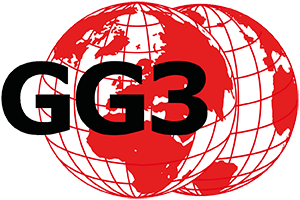In many of his works, Stephan Groß is concerned with what is hidden beneath an appetizing surface; he draws attention to the by- and aftertaste of things. To begin with the work “Written in the Wind”, which directly supports this thesis: In this wall-sized Braille of the letters BASF, the gray fields correspond to harmful particles in the air – a reference to the environmental destruction and former human annihilation of the BASF chemical company, which has sometimes tried to hide the problematic aspects of its business activities under the camouflage net of critical art. Similar to “Hannibal’s Crossing of the Alps”: the elephants enter the mountain through the basement. And in the AI-generated images at the beginning of the exhibition, the cutting glances of future generations pierce the philosophical foundations of our Western thinking. What is the flip side of its groundbreaking success, where is the Western premise of progress taking us – progress that philosopher and psychiatrist Karl Jaspers, who placed AI in the pictures opposite babies, located in exact science but not in philosophy. Jaspers, of all people, sits here, the apologist of existential philosophy and warner against totalitarianism, who complemented the latter with the free individual and the whole of being, which goes beyond what the method of exact science grasps. Such tension-filled collisions, inexhaustible sources of ever new ways of seeing due to a constantly shifting front, are the basis of Groß’s art.
According to Jaspers, given our freedom, we bear responsibility for our actions, which brings us to the topic of sustainability. This exhibition is a network of references (Stephan Groß would probably rather speak of a “collage”), which – as the artist says – are partly due to coincidences, but which nevertheless carry a meaning in themselves. Because they are references. We don’t have to and can’t decipher them all, and yet we are inevitably right in the middle of them; this is also the case with global contexts and the topic of sustainability.
But what does the baby say to the old white man, to the philosopher Jaspers, in the context of their dispute? “Progressive,” is the name of this show, so what is left of the Western promise of progress, how might it be formulated, and who or what is its bearer? Is it only a matter of slowing down the mechanical impulse to move as much as possible, are we left with the preservation of the status quo as the last utopia, or is there still something to be gained? Here at GG3, that exists at least on a small scale – in the form of Stephan Groß’s art. Whether there is a promise in this or whether it is only a weak consolation … The fact that he poses this question in the room, that he pushes open for us with each of his works another door to a field beyond his art, is the outstanding achievement of Stephan Groß.
